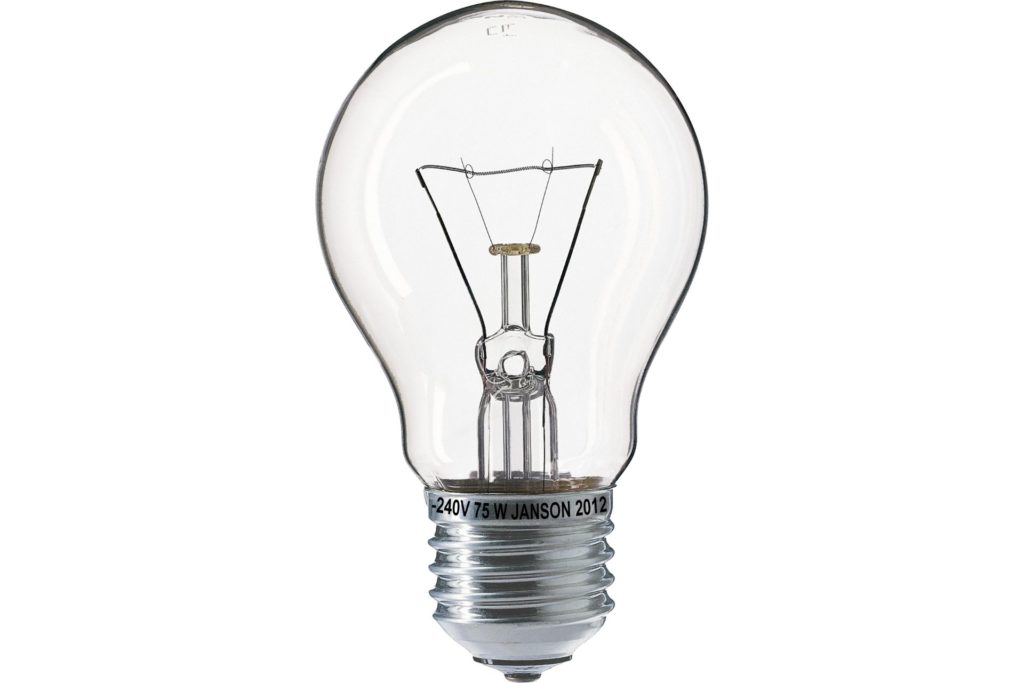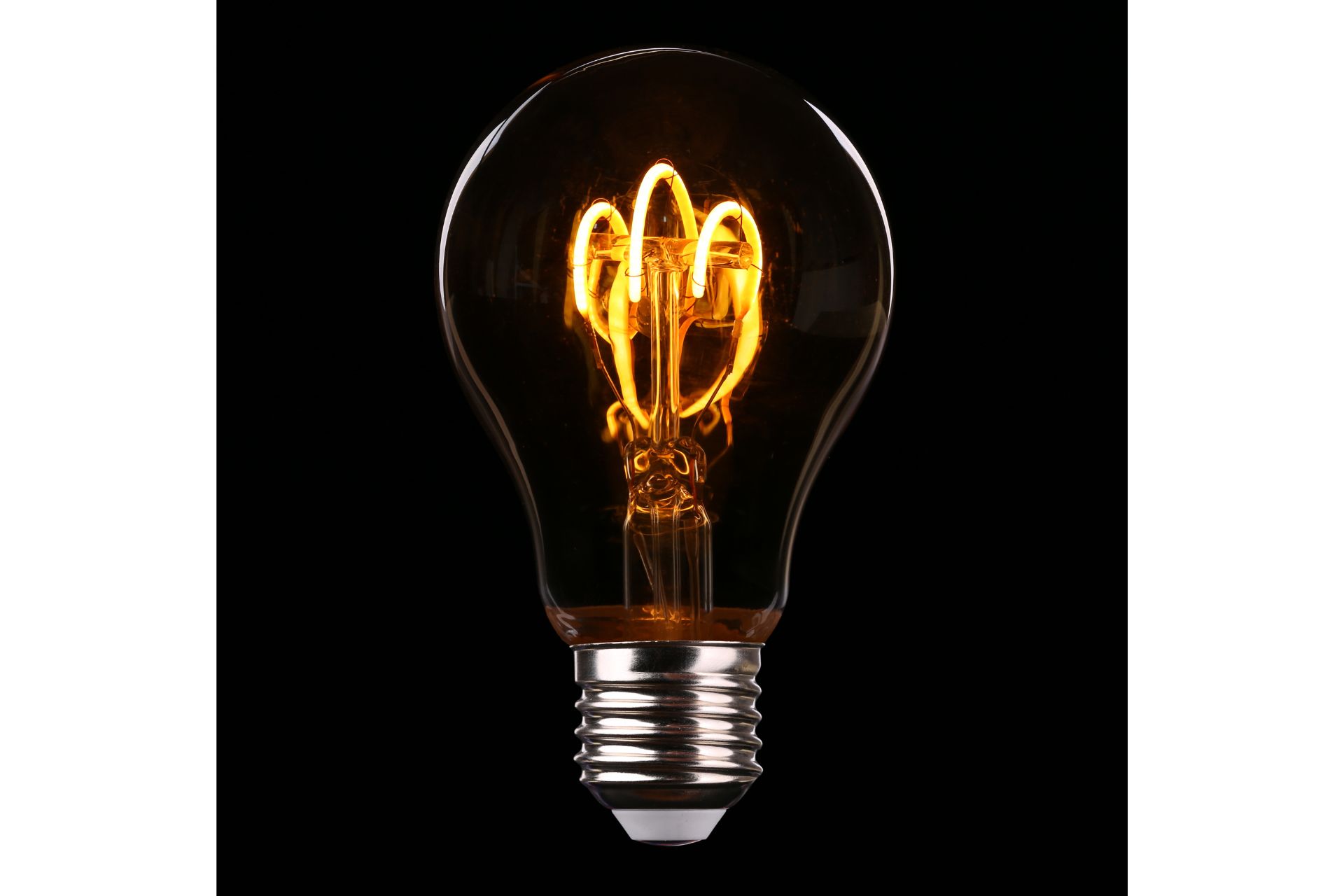People use energy-saving bulbs because of their efficiency and cost-effectiveness. But what happens when an energy-saving bulb starts flickering? This sounds like a minor inconvenience, but it can become very annoying very quickly.
Why Do Energy Saving Bulbs Flash When Switched Off?
Some lamps have a small current that doesn’t stop flowing even when you flip the switch to the off position. When that charge accumulates in the capacitor, the capacitor will attempt to activate the lamp by initiating a pulse. But the light won’t start because the current is insufficient. However, it will flicker whenever this capacitor initiates the pulse.
The rate at which this happens will depend on the time it takes for the charge to build in the capacitor.
You will see similar occurrences in setups whose light sockets have a persistent voltage even though the light is off. You can confirm your suspicions by measuring the voltage across the wires.
This voltage doesn’t matter to incandescent bulbs, but you may notice it once you install an energy-saving bulb because of the flashing and flickering. Ask an electrician to look at the socket. They will probably discover poor wiring.
Are you sure the bulb is really flickering?
A whirlpool energy-saving bulb maintains a dull glow after they switch it off. That flow eventually fades.
But if you’ve never owned an energy-saving bulb, that lingering glow may surprise you. Ultimately, you should only take action if the glow refuses to fade. Glows of that sort eventually disappear.
If it doesn’t disappear, maybe the bulb is defective. I want you to check the connection between the bulb and socket. Have you tried tightening the bulb?
For all you know, the bulb has a loose connection. Tightening the bulb may not work if the socket is defective. Don’t be surprised if a technician compels you to replace the socket.
You can test your theory by putting the bulb in another socket. If the blinking stops, you can conclude that the previous socket is defective.
A faulty switch can cause blinking and flickering in bubs. Check the switch for worn-out wires and loose connections.
You should also check the connection between the switch and bulb. Loose connections are dangerous. They can cause arcing, which can result in a fire. In other words, the flashing is the least of your worries.
You will see flashing in circuits with wiring errors. For instance, the switch can break the neutral, energizing the lamp in the process by allowing a current to charge the capacitor occasionally.
A poor-quality bulb is more likely to flash. Many energy-saving bulbs are more expensive than their traditional counterparts. People don’t realize that an energy-saving bulb will save them more money in the long run.
Some consumers will settle for cheaper energy savers that can’t be trusted to operate reliably because the manufacturers made them with inferior materials and substandard technology. Cheap bulbs will flash and flicker for a while before they die.
Read Can You Use LED Bulb In Any Fixtures? (Enclosed, Halogen)
Does The Bulb Need To Flicker?

Some bulbs will flicker. You cannot stop them. But the manual will inform you ahead of time. This is the deciding factor. It will determine whether or not you should worry.
If the manual says that your energy-saving bulbs should flicker, you should accept it. You can consult a professional. Find out if they can eliminate the flashing. But if they can’t, you should let it go. Better yet, get a different bulb.
But if the manual doesn’t say anything about flickering, you should take action. But again, your only option is to consult a licensed technician.
Isn’t Flickering Dangerous?
For the most part, flickering is harmless. At worst, it is an annoyance because the flashing may keep you awake at night. Naturally, there are exceptions. But in most cases, flickering is not dangerous.
When Should I Not Worry About Flickering?
You shouldn’t worry about flickering if the manual for the energy-saving bulb has told you to expect it. In other words, the flashing is a normal consequence of the bulb’s functions.
When Should I Worry About Flickering?
Flickering becomes a problem when it originates from poor wiring and loose connections. Loose connections can cause arcing, and arcing can start a fire. Therefore, you should call a professional the moment you notice arcing.
Is There Any Way To Stop My Bulbs From Flickering?

You cannot deploy an effective solution to the flashing issue without identifying the source of the problem. If you know the problem, try the following solutions:
1). Loose wiring should be your biggest concern. Loose wires can burn your house down if the issue persists. Hire a technician. Ask them to inspect your circuit from top to bottom.
Don’t assume that the problem is restricted to the bulb. The contractor will analyze all the relevant switches and connectors until they find the culprit. The flickering won’t stop until they fix the loose connections.
2). If the bulb is loose in the socket, the contractor will tighten it. If the flashing continues, they will inspect the socket for faults. They won’t hesitate to replace the socket if the device is beyond repair.
Sockets have limited lifespans. They eventually wear out. If you’ve lived in the same house for several years, don’t be surprised if the sockets start wearing out.
3). If the light switch is defective, the contractor will either fix or replace it. The layperson cannot troubleshoot a switch. You may fix damaged wires with electrical tape when you are better off getting new cables.
Despite what many laypeople think, electrical tape is not the solution to conductors with torn jackets. You cannot trust a wire with a broken sheath. What if the tape falls off? The arcing will start a fire.
4). Some lamps flicker because they use electronic switches, dimmers, and dusk-to-dawn sensors. While this technology is convenient, you should consider replacing them with conventional switches.
5). Don’t be afraid to replace malfunctioning devices. Some lamps have factory errors you cannot fix. A technician can troubleshoot the devices to determine whether or not they are salvageable. But if they encourage you to get a new energy-saving lamp, you should listen.
Apply caution when purchasing a replacement. Investigate the manufacturer. What kind of reputation do they have? Do they provide guarantees? What do their previous customers think of them? There’s no point in replacing one low-quality bulb with another low-quality bulb. The same problems will manifest down the line.
6). If you have electrical disturbances because of tightly bound cables in pipes, increase the distance between the lines. You may require the services of a professional, especially if the wires are buried underground or behind walls.
You cannot trust a layperson to dig for wires in their home. What if they accidentally sever a cable? They will turn a simple annoyance into a severe problem that requires hundreds of dollars to fix, possibly even thousands.
7). If you wired the light yourself, check your work. Look at the diagrams carefully. You can also watch videos showing laypeople how to wire energy-saving lamps. The bulb is probably flashing because you made a mistake.
Related Post:

